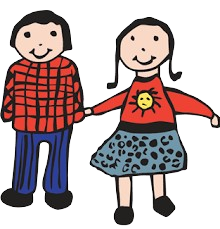Art & Design
At Ramsden Infant School we aim to deliver a curriculum which is accessible to all and allows curiosity, creativity and self –expression to develop alongside resilience, confidence and critical thinking skills.
In creating a wide range of products and artwork, these skills can then transfer to other areas of the curriculum.
While it is essentially a practical subject, art should provide opportunities for reflection and, with increasing sensitivity, pupils should acquire the ability to make informed, critical responses to their own work and that of others.
There is great pleasure to be derived from Art and Design and, through deeper understanding; pupils can gain access to cultural richness and diversity. The appreciation and enjoyment of the visual arts enriches all our lives.
The aims of Art and Design are:
- To enable all children to have access to a varied range of high quality art experiences
- To inspire personal expression
- To encourage children to think creatively and critically
- To equip children with the knowledge and skills to work as artists, crafters, designers, experimenting, inventing, and creating their own works of art, craft, and design
- To stimulate children’s creativity and imagination by providing visual, tactile and sensory experience
- To develop an understanding of how the many disciplines of art, craft and design reflect and shape the history, culture, and future creativity of our nation
- To develop children’s understanding of colour, form, texture, pattern and their ability to use materials and processes to communicate ideas, feelings and meanings
- To teach Art and Design in a way that ensures progression of skills and follows a sequence to build on previous learning.
|
|
|
Implementation
In accordance with the National Curriculum we deliver a broad and balanced Art and Design curriculum that builds on previous learning and provides both support and challenge for learners. Our curriculum is structured to build skills and vocabulary from Early Years through Key Stage 1.
All children will have opportunities to:
- Generate ideas that are original
- Make their own work and use materials and techniques purposefully
- Evaluate, understand and improve their work
- Acquire knowledge and understanding of the world of art, craft and design
In Early Years, you will see children:
- Working collaboratively and independently both inside and outdoors.
- Being actively involved in creative projects linked to their interests
- Exploring/developing skills which have previously been taught by an adult.
- Talking about what themselves and others have created.
- Working on a small and large scale (especially outdoors).
- Exploring a wide range of age-appropriate resources which they can select themselves.
- Responding creatively to what they see, hear, feel, and experience.
- Having opportunities to work alongside adults to learn new skills and consolidate learning.
- Having time to return to unfinished projects.
- Developing independence in preparing and clearing away resources
- Using both specific art resources and found objects/natural materials to create art.
- Creating both permanent and temporary creations
- Creating artworks linked to/inspired by other areas of learning or combining them.
- Requesting (or accepting) additional resources from an adult to develop their ideas.
- Having opportunity to display their creations for others to see.
- Making choices about which materials and techniques to use to achieve their end goal.
In Key Stage 1 pupils will be:
- Taught to investigate, experiment, and explore materials and processes informing the way that they design and make products and express outcomes
- Taught to use drawing, painting, sculpture, and a range of processes which include digital media and 3-dimensional work to develop and share their ideas, experiences, and imagination
- Taught to begin developing a wide range of art, craft and design processes and techniques in using colour, pattern, texture, line, shape, tone, form, and space
- Introduced to and be able to explore one or more selected key features of the work of a range of significant artists, craft makers, architects, filmmakers, and designers, describing the differences and similarities between different practices and disciplines, and start to make links to pupils’ own work.
- Encouraged to look at pictures, films, clips, books, reproductions, websites, and original work (where possible) to start to develop skills of reflection, consideration, identification, analysis, selection, comparison, speculation, imagination, questioning, interpretation, evaluation and inform their own creative decision making
- Sharing their developing views and ideas gained through reading, speaking, and listening and use this to inform their own creative actions.
|
|
|
Impact
Our children will:
- enjoy and value Art and Design and know why they are doing things, not just how.
- produce creative work, exploring their ideas and recording their experiences
- begin to develop skills in drawing, painting, sculpture and other art, craft, and design techniques
- begin to evaluate and analyse creative works using the language of art, craft, and design
- begin to know about great artists, craft makers and designers, and understand the historical and cultural development of their art forms
Progress in Art and Design is demonstrated through regularly reviewing children’s work, especially over time as they gain knowledge and skills; observing their development of skills during lessons and giving feedback when necessary (without stopping individual creativity); and discussions with pupils about their work and what they know at regular intervals. An assessment pro forma will also be completed by each class teacher at the end of every sequence of lessons to ensure that progression of knowledge and skills is taking place.
Class teachers will use a ‘Progression in skills’ document to ensure skills are being developed throughout the key stage and record progress half termly, this will be shared with the Art Subject Lead.
Individual sketchbooks used in Key Stage 1 will be passed on to the following class teacher each year.
The subject leader is responsible for monitoring and keeping photographic evidence of school displays




